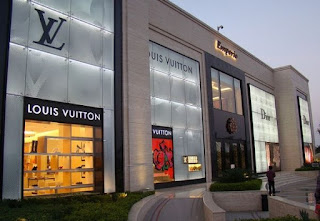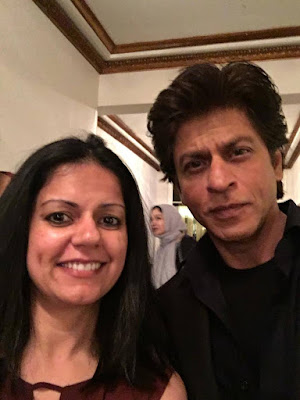Dilli Brand-Waalon Ki
I was getting ready to go to a restaurant in Delhi located in a luxury mall in Vasant Kunj. Needless to say, my excitement had built up in San Francisco over months to meet my extended family including Chachu, Chachi and Sahil who were visiting from Ahmedabad, my cousin Chinky di, Vijay jiju, Mayank and my cousins Jaya and Hardik.
Growing up in Delhi,
getting ready was one of my favorite things to do before any social event.
Contemplating what to wear and how best to stand apart from the crowd were like second nature. I knew everyone would be noticing each other’s jewelry, number
of designer label brands, cars they arrived in and how “rich” they
looked. When so much importance was given to aesthetics, who wouldn’t like to
get ready, right?
However, as I stood in
front of my closet on that Sunday, I felt conflicted about whether to wear brands/jewelry or not. There was pure excitement to meet my extended family.
I just wanted to focus on nourishing relationships and connect with them in
ways that go beyond looking good as I hadn’t seen them in a long time. But, I was aware about the "rich" ambiance of the restaurant and the overall Delhi culture of looking good, which had increased in the
recent past with the rise of luxury brands.
What used to be just
the shine of diamond earrings at weddings and ‘kitty’ parties had permeated
into every aspect of Delhi’s social scene – sunglasses, designer suits,
dresses, handbags, shoes, watches, etc. everything contributed to looking a
socialite. When I used to live there, I was also a part of the culture spending
my hard-earned advertising money at Emporio mall. It made me feel good about my status and how others perceived
me with that display of wealth.
x
But in San Francisco, all
my brands had dusted away in my closet for the past five years. People under-displayed
their wealth significantly, for better or worse. It made me wonder why Delhi was
the opposite. Why were weddings so ostentatious? Why was decking-up considered
normal before a trip to Emporio, high-end market or any restaurant? Of course, ideologically one
could opt out but why was the culture as such?
x
Post-independence,
Delhi was a political and business city. Both of these aspects shook hands continuously.
To move businesses forward, contacts in the political scene became mandatory to
overcome “daftar” like hurdles. A pomp display of wealth helped to showcase the business’ image and paint a picture of how well it was doing.
Knowing the
“right” people in the government also ensured high momentum for any business.
Therefore, people used wealth to build image and a network of contacts - people loved “name
dropping” the number of ministers and influential people they knew to get what they
wanted. This mindset became the underlying DNA of the city, propelling people
to be wealth- and image- conscious most of the time.
While there is nothing
wrong with a pompous display of money, it shouldn’t be a catalyst for social
ecosystem. The first thing noticed about a person needs to go beyond jewelry, labels
or cars. We’re all more than what we appear -- “Dilli Dilwaalon Ki” needs to
reflect in the social fabric of society. Doting luxury brands shouldn’t create
first impressions of any kind – whether good or bad. Whether I wear junk jewelry
from Dilli Haat or custom diamond earrings from Hazoorilal, my perspectives and values as a person should be more important. And if I am referred in another social setting, my point of view
should be remembered more than the earrings I wore.
With a thoughtful mind,
I picked out a necklace I’d bought from Janpath when I was in college to wear
with jeans and a regular top. I couldn’t care less about my look today than how
I connected with people who mattered most to me in Delhi.





Comments
Post a Comment